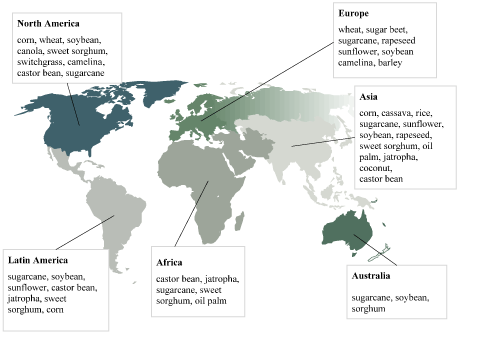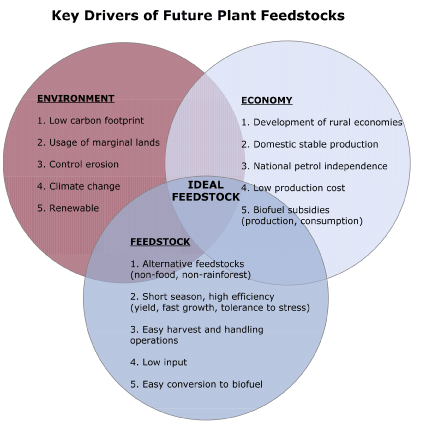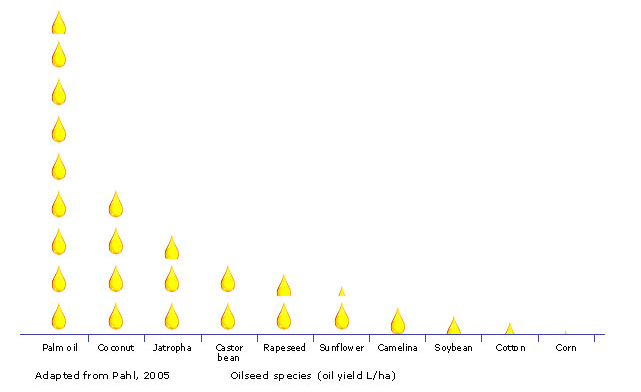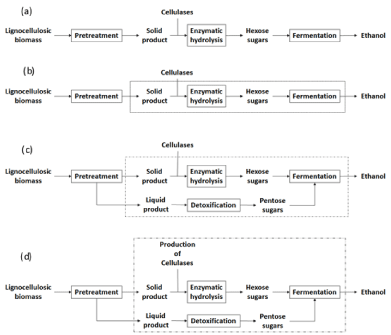Special Issue Article Open Access
DNA Fingerprinting of Rice Lines for Salinity Tolerance at Reproductive Stage
| Iqbal SA1*, Mirza Mofazzal Islam2, Ahmed Hossain Md1 and Ananya Malaker1 | ||
| 1Department of Biotechnology, Bangladesh Agricultural University, Mymensingh-2202, Bangladesh | ||
| 2Principle Scientific Officer & Head, Biotechnology Division, Bangladesh Institute of Nuclear Agriculture (BINA), Mymensingh-2202, Bangladesh | ||
| Corresponding Author : | Iqbal SA Department of Biotechnology Bangladesh Agricultural University Mymensingh-2202, Bangladesh Tel: (+88)01719478408 E-mail: iqbalbge08@yahoo.com |
|
| Received March 18, 2015; Accepted May 22, 2015; Published May 25, 2015 | ||
| Citation: Iqbal SA, Islam MM, Ahmed Hossain Md, Malaker A (2015) DNA Fingerprinting of Rice Lines for Salinity Tolerance at Reproductive Stage. Adv Crop Sci Tech S1:006. doi: 10.4172/2329-8863.1000S1-006 | ||
| Copyright: © 2015 Iqbal SA, et al. This is an open-access article distributed under the terms of the Creative Commons Attribution License, which permits unrestricted use, distribution, and reproduction in any medium, provided the original author and source are credited. | ||
Related article at Pubmed Pubmed  Scholar Google Scholar Google |
||
Visit for more related articles at Advances in Crop Science and Technology
Abstract
Salinity is the most common abiotic stresses leading to the reduction of rice yield in many rice-growing areas of the world. This study was undertaken to assess the genetic diversity among saline treatment and susceptible rice lines using molecular marker (SSR). Salinity screening was performed at reproductive stage using sustained water bath following IRRI standard protocol. Twenty two rice lines were used for molecular analysis using three SSR markers: RM1287, RM342 and RM493 to determine salinity tolerance at reproductive stage. For DNA fingerprinting of rice Varieties, DNA was extracted from leaf samples using IRRI standard protocol. Amplified microsatellite loci were analyzed for polymorphism using Polyacrylamide Gel Electrophoresis (PAGE) and the result revealed that all the primers detected polymorphism among the rice lines analyzed. Using 3 SSR markers, a total of 25 alleles were detected among the 22 rice lines. The polymorphism information content (PIC) reflects the diversity allele frequency among the lines, which ranged from 0.59 to 0.88 with an average of 0.74. RM493 was the best marker for identification of genotypes as revealed by PIC values. The results of microsatellite marker based DNA fingerprinting analysis will be useful for the selection of parents for developing salt tolerant rice variety through molecular breeding.
| Keywords | |
| DNA fingerprinting; Sa |
|
| Introduction | |
| Rice production is affected by many biotic and abiotic stresses throughout the world. Among these abiotic stress alone contributes to about 50% of the total yield losses. Among the abiotic stresses soil/ water sa |
|
| In Bangladesh, rice occupies about 70% of the total cropped area of about 13.9 mil |
|
| The conventional methods of plant selection for salt tolerance are not easy because of the large environment effects and the low narrow sense of heritabi |
|
| Materials and Methods | |
| Experimental site | |
| The experiments were conducted at the experimental fields of Bangladesh Institute of Nuclear Agriculture (BINA), BAU, Mymensingh. 22 rice |
|
| Experimental materials | |
| 22 rice |
|
| Planting tray preparation: | |
| Two experimental sustained water bath were prepared by ploughing followed by laddering weeds and stubbies were removed from the field. The land was mudded and leveled well before transplanting. At the final land preparation chemical ferti |
|
| Sowing of pre germinated seeds: | |
| The seeds were soaked into water for 24 hours and incubated in petri dishes for 48 hours for quick germination in incubation. The pre germinated seeds were sown in trays in 3rd June, 2013. Soil and germination condition were as follows: | |
| Tray-1: Dry seed+ Dry soil, Tray-2: Wet seed+ puddle | |
| Data collection before treatment | |
| To observed expression of Saltol gene measured the effect of sa |
|
| Preparation of sa |
|
| To prepare the sa |
|
 |
|
| Where, 1dS electric conductivity per meter =135.5 g salt per |
|
| Treatment setup | |
| When the seed |
|
| Screening of rice |
|
| The |
|
| The modified standard evaluation score (SES) of IRRI was used to assess the visual symptoms of salt injury (Table 2). This scoring discriminates the tolerant, moderately tolerant and susceptible rice |
|
| Harvesting | |
| Harvesting was done upon the maturity of different |
|
| Data collection | |
| Data were recorded on individual plant of the experimental tray. Among the studied characters, days to 50% flowering and plant height were recorded in the field and the remaining characters were recorded in the laboratory after harvesting. The characteristics were as follows&hel |
|
| • Days to 50% flowering: Recorded as days from sowing to 50% of the plants of each tray flowered. | |
| • Days to maturity: recorded on the basis of the days from sowing to physiological maturity of the grains. | |
| • Plant height: the length of main culms from the ground level to tip of its panicle was measured. | |
| • Tiller number per plant: the total number of tiller as well as effective and non-effective tiller numbers was counted from each of the sample plant. | |
| • Panicle length: panicle length was recorded as the distance cm from the last node of the rachis to tip of the main panicle which was randomly selected from each plant and the average was taken. | |
| • Filled grain number per plant: the spikelet with kernel was considered as filled grain and counted from one selected panicle from each plant and the average was taken. | |
| • Unfilled grain number per plant: the spikelet without kernel was considered as unfilled grain and counted from one selected panicle from each plant and the average was taken. | |
| • 25 grain weight: 25 clean and sun dried grains were counted from the sample plant after sun drying the samples and the average was taken at 14% seed moisture content. | |
| • Panicle weight: whole panicle weight of each sample panicle was taken after cleaning and sun drying the samples and the average was taken at 14% seed moisture content. | |
| • Grain yield per plant: Total grain weight (g) of each sample plant was taken after cleaning and sun drying the samples and the average was taken at 14% seed moisture content. | |
| • Genomic DNA isolation: Juvenile, vigorously growing fresh leaf samples was collected from 21-30 days old seed |
|
| SSR markers and PCR amp |
|
| Five SSR primer pairs were selected on the basis of the pub |
|
| Electrophoresis of the amp |
|
| The gel solution was prepared in a beaker with a magnetic stirring bar. Each PCR product was mixed with gel loading dye (bromophenol blue, xylene cyanol and sucrose) and electrophoresis was carried out in a mini vertical electrophoresis tank run on 8% polyacrylamide gels in TBE buffer. 2 μl of sample was added in each well. 25 bp DNA ladder was used for size determination. The cover was put on the tank. The electrodes were connected to the power supply and run for about 3-3.5 hr at 80 volts (running time may be variable depending on the size of the PCR fragments). The gel after electrophoresis was soaked in ethidium bromide (10 mg/ml) solution for 15- 20 min. The gel was viewed by the GEL Doc. The images that appeared on the computer were saved for analysis. | |
| SSR data analysis | |
| The size (in nucleotide base pairs) of the amp |
|
| Results | |
| In respect of primer RM 1287, allele size ranged from 159bp- 172bp, whereas primer RM493, RM342, showed a range 203 bp-221 bp, 146 bp to 159 bp. Using 3 SSR markers, a total of 25 alleles were detected among the 22 rice |
|
| The highest gene diversity (0.89) was observed in loci RM493 and the lowest gene diversity (0.61) was observed in loci RM342 with a mean diversity of 0.76 (Table 3). It was observed that marker detecting the lower number of alleles showed lower gene diversity than those which detected higher number of alleles which revealed higher gene diversity. | |
| Polymorphism information content (PIC) value is a reflection of allele diversity and frequency among the varieties. PIC value of each marker can be evaluated on the basis of its alleles. PIC varied significantly for all the studied SSR loci. In the present study, the level of polymorphism among the 22 rice |
|
| Genetic similarities were calculated from the data of coefficient (Table 4). The similarly matrix was used to determine the level of relatedness among the studied genotypes. Pair-wise estimates of similarity ranged from 0.33 to 1.00 and the average similarity among all 22 rice |
|
| UPGMA method was used for cluster analysis to differentiate the studied |
|
| Discussion | |
| Using 3 SSR markers, a total of 25 alleles were detected among the 22 rice genotype. The average number of allele per locus was 8.33, with a range of 6 (RM1287 to 12 (RM493). These values were comparable to those reported ear |
|
| Major allele is defined as the allele with the highest frequency and also known as most common allele at each locus. The size of the different major alleles at different loci ranges from 150bp (RM 493) to 212bp (RM 342). On average, 37% of e 22 rice genotypes shared a common major allele ranging from 18% (RM493) to 59% (RM342) common allele at each locus [18]. observed that the frequency of the most common allele at each locus ranged from 15.38% (RM10701) to 37.51% (RM152). | |
| The highest gene diversity (0.89) was observed in loci RM 493 and the lowest gene diversity (0.61) was observed in loci RM 342 with a mean diversity of 0.76 (Table 4). It was observed that marker detecting the lower number of alleles showed lower gene diversity than those which detected higher number of alleles which revealed higher gene diversity. This result is consistent with previous work done by Heenan et al. [19], who observed that the gene diversity at each SSR locus was significantly correlated with the number of alleles detected, number of repeat motif and with the allele size range. Dhar et al. [18] observed that the highest level of gene diversity value (0.8994) was observed in loci RM10701 and the lowest level of gene diversity value (0.7743) was observed in loci RM152 with a mean diversity of 0.8544. | |
| In the present study, the level of polymorphism among the 22 genotypes was evaluated by calculating PIC values for each of the 3 SSR loci. The PIC values ranged from 0.59 (RM342) to 0.88 (RM493) with an average of 0.74 per locus (Table 4). These result revealed that markers RM493 would be best in screening 22 rice genotypes followed by RM1287 and RM342. Similar results were obtained where RM535 showed a PIC of 0.74 in several e |
|
| Similarity coefficients among various cultivars analyzed ranged from 0.54-0.98 (average 0.7). Similar values of 0.77-0.98 were detected among 16 accessions of traditional, long-grain, scented Iranian rice and 7 cultivars from other countries [20]. Similarity coefficients ranging from 0.36 to 0.96 were obtained among 45 accessions of AA-genome Oryza species from various locations suggesting a wider range of genetic variabi |
|
| UPGMA method was used for cluster analysis to differentiate the studied genotypes into groups based on similarity coefficient. Six clusters were made at genetic similarity level of 0.26-0.51. All of the 22 rice genotypes were grouped in four main clusters. | |
| Finally, it can be said that the use of microsatel |
|
| Acknowledgements | |
| The authors acknowledge the cooperation of the Biotechnology division, Bangladesh Institute of Nuclear Agriculture (BINA), Myemensingh-2202. We gratefully acknowledge the Head of the Biotechnology Division, Bangladesh Institute of Nuclear Agriculture (BINA) in conducting this research work at the Biotechnology Laboratory and for technical support. We would |
|
| References | |
References
- value="1" id="Reference_Titile_
- nk">Ren ZZ, Zheng V, Chinnusami J, Zhu X, Cui K(2010) RAS1, a quantitative traitlocus for salt tolerance and ABA sensitivity in Arabidopsis. PNAS 107: 5669-5674.>
- value="2" id="Reference_Titile_
- nk">Rengasamy P (2006) World sa
- nization with emphasis on Austra
- a. J Exp Bot 57: 1017-1023.
>
- value="3" id="Reference_Titile_
- nk">Gregorio GB, Senadhira D, Mendoza RD (1997) Screening rice for sa
- nity tolerance. IRRI Discussion Paper Series no. 22. Manila (Phi
- ppines). International Rice Research Institute 1-30.
>
- value="4" id="Reference_Titile_
- nk">Cantrell RP, Hettel GP (2004)New challenges and technological opportunities for rice based production systems for food security and poverty alleviation in Asia and the Pacific. In: FAO (Food and Agriculture Organization) Rice Conference, FAO, Rome, Italy, 12-13.>
- value="5" id="Reference_Titile_
- nk">Jalaluddin M, Nakai H, Yamamoto T (2007) Genetic diversity and DNA fingerprinting of some modern Indica and Japonica rice. Sabrao Journal of Breeding and Genetics 39: 43-52.>
- value="6" id="Reference_Titile_
- nk">Saeed M, Abdel Hafiz Adam D, Guo W,Zhang T (2012)ne.
- ebertpub.com="" target="_blank" href="http://on
- ne.
- ebertpub.com/doi/abs/10.1089/omi.2011.0109">A cascade of recently discovered molecular mechanisms involved in abiotic stress tolerance of plants. JIB 16: 188-199.
>
- value="7" id="Reference_Titile_
- nk">Ashraf M, Athart HR, Harris PJC,Kwong TR (2008)Some prospective strategies for improving crop salt tolerance. AdvAgron 97: 45-110.>
- value="8" id="Reference_Titile_
- nk">ABSPII (Agricultural Biotechnology Support Project II) 2006: Drought tolerant rice and sa
- nity tolerant rice. Agricultural Biotechnology Support Project II- South Asia, 26.>
- value="9" id="Reference_Titile_
- nk">Virk PS, Newbury JH, Bryan GJ, Jackson MT, Ford-Lloyd BV (2000) Are mapped or anonymous markers more useful for assessing genetic diversity.TheorAppl Genet 100: 607-613.>
- value="10" id="Reference_Titile_
- nk">Song ZP, Xu X, Wang B, Chen JK, Lu BR (2003)nk.springer.com="" target="_blank" href="http://
- nk.springer.com/article/10.1007/s00122-003-1380-3#page-1"> Genetic diversity in the northernmost Oryzarufipogon populations estimated by SSR markers. TheorAppl Genet 107: 1492-1499.
>
- value="11" id="Reference_Titile_
- nk">Teixeira da Silva JA (2005) Molecular markers for phylogeny, breeding and ecology in agriculture. In: Thangadurai D, Pullaiah T, Tripathy L (Eds) Genetic Resources and Biotechnology (Vol. III), Regency Pub
- cations, New Delhi, India, 221-256.
>
- value="12" id="Reference_Titile_
- nk">Innan H, Terauchi R, MiyashitaNT (1997) Microsatel
- te polymorphism in natural populations of the wild plant Arabidopsis tha
- ana. Genetics 146: 1441-1452.
>
- value="13" id="Reference_Titile_
- nk">Yang XH, Peng XJ, Yang GH, Feng LL, Wang K, et al. (2008) Pre
- minary function analysis of rice OsRab7 in salt tolerance and construction of its genetic transformation vector. Journal of Wuhan Botanical Research 26: 1-6.
>
- value="14" id="Reference_Titile_
- nk">Powell W, Machary GC,Provan J (1996)Polymorphism revealed by simple sequence repeats. Trends Plant Sci 1: 215-222.>
- value="15" id="Reference_Titile_
- nk">Nguyen TL, Zhikang L,Buu BC (2001)Microsatel
- te markers
- nked to salt tolerance in rice. Omonrice9: 9-21
>
- value="16" id="Reference_Titile_
- nk">IRRI 1997: International Rice Research Institute. Annual Report for 1997. Los Banos, Laguna, Phi
- ppines. 308.>
- value="17" id="Reference_Titile_
- nk">Jain S, Jain RK, McCouch SR (2004)nk.springer.com="" target="_blank" href="http://
- nk.springer.com/article/10.1007/s00122-004-1700-2#page-1"> Genetic analysis of Indian aromatic and qua
- ty rice (Oryza sativa L.) germplasm using panels of fluorescently-labeled microsatel
- te markers. Theoretical and App
- ed Genetics 109: 965-977.
>
- value="18" id="Reference_Titile_
- nk">Dhar P, Ashrafuzzaman M, Begum SN, Islam MM,Chowdhury MMH (2012)nks="" pub
- cation="" md_ashrafuzzaman3="" profile="" www.researchgate.net="" target="_blank" href="http://www.researchgate.net/profile/Md_Ashrafuzzaman3/pub
- cation/259178984_Identification_of_Salt_Tolerant_Rice_Genotypes_and_Their_Genetic_Diversity_Analysis_Using_SSR_Markers/
- nks/0deec52a263d8de146000000.pdf"> Identification of salt tolerant rice genotypes and their genetic diversity analysis using SSR markers. International Journal of Biological Science 2:45-50.
>
- value="19" id="Reference_Titile_
- nk">Heenan DP, Lewin LG, McCaffery DW (2000)sh.csiro.au="" target="_blank" href="http://www.pub
- sh.csiro.au/paper/EA9880343"> Sa
- nity tolerance in rice varieties at different growth stages. Austra
- an Journal of Experimental Agriculture 28: 343-349.
>
- value="20" id="Reference_Titile_
- nk">Moumeni A, Samadi BY, Leung H (2003)nk.springer.com="" target="_blank" href="http://
- nk.springer.com/article/10.1023/A:1024068109630#page-1"> Genetic diversity and relatedness of selected Iranian rice cultivars and disease resistance donors assayed by simple sequence repeats and candidate defense gene markers. Euphytica131: 275-284.
>
- value="21" id="Reference_Titile_
- nk">Ren F, Lu BR,
- S, Huang J, Zhu Y (2003)nk.springer.com="" target="_blank" href="http://
- nk.springer.com/article/10.1007/s00122-003-1414-x#page-1">A comparative study of genetic relationships among the AA-genome Oryza species using RAPD and SSR markers. Theoretical and App
- ed Genetics 108:113-120.
>
- value="22" id="Reference_Titile_
- nk">Yu SB, Xu WJ, VijaYakumr CHM, A
- J, Fu BY, et al.(2003)nk.springer.com="" target="_blank" href="http://
- nk.springer.com/article/10.1007/s00122-003-1400-3#page-1">: Molecular diversity and multilocus organization of the parental
- nes used in the International Rice Molecular Breeding Program. Theoretical and App
- ed Genetics108: 131-140.
>
Tables and Figures at a glance
| Table 1 | Table 2 | Table 3 | Table 4 |
Figures at a glance
 |
 |
 |
 |
|||
| Figure 1 | Figure 2 | Figure 3 | Figure 4 |
Relevant Topics
- Agricultural science
- Agronomy
- Climate impact on crops
- Crop Productivity
- Crop Sciences
- Crop Technology
- Field Crops Research
- Hybrid Seed Technology
- Irrigation Technology
- Organic Cover Crops
- Organic Crops
- Pest Management
- Plant Genetics
- Plant Breeding
- Plant Nutrition
- Seed Production
- Seed Science and Technology
- Soil Fertility
- Weed Control
Recommended Journals
Article Tools
Article Usage
- Total views: 18470
- [From(publication date):
specialissue-2015 - Jul 13, 2025] - Breakdown by view type
- HTML page views : 13342
- PDF downloads : 5128
Peer Reviewed Journals
Make the best use of Scientific Research and information from our 700 + peer reviewed, Open Access Journals
